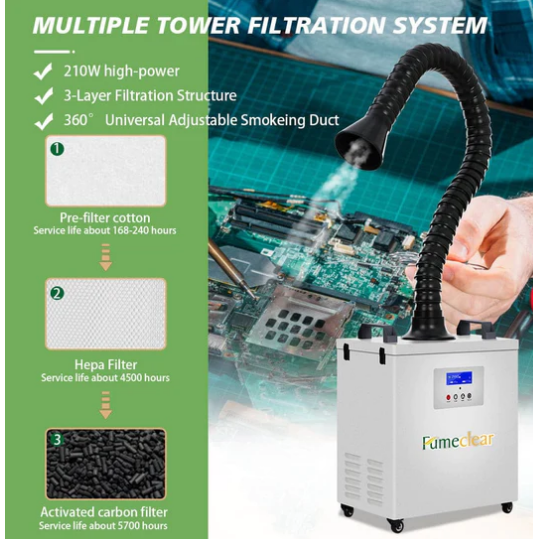Welding fume extractors, also known as welding smoke extractors or welding fume collectors, are crucial equipment for ensuring the safety of workers in welding operations. They are designed to remove harmful fumes, gases, and particles generated during welding, cutting, and grinding processes. In this article, we will discuss the proper installation and use of welding fume extractors.
Installation
- Determine the optimal location for the fume extractor. The extractor should be placed as close to the welding operation as possible. This will ensure that the fumes are captured at the source before they can disperse into the surrounding air.
- Ensure that the extractor is connected to a suitable power source. Depending on the model, the extractor may require a 120V or 240V power supply. Consult the manufacturer’s instructions for the specific requirements of your extractor.
- Attach the extractor to a suitable mounting surface. The extractor should be securely mounted to a wall, column, or other stable structure. Use the mounting hardware provided by the manufacturer and ensure that the mounting surface can support the weight of the extractor.

- Connect the extractor to the ducting system. The ducting system should be designed to carry the fumes from the welding fume extractor. Use appropriate ducting materials and fittings to ensure that the system is air-tight and free from leaks.
- Install a suitable filter in the extractor. The filter should be selected based on the type of welding being performed and the materials being used. Consult the manufacturer’s instructions for the appropriate filter for your application.
Use
- Ensure that the extractor is turned on before beginning welding. The extractor should be running at full capacity before welding begins to capture as many fumes as possible.
- Position the welding operation as close to the extractor as possible. This will ensure that the fumes are captured at the source before they can disperse into the surrounding air.
- Regularly inspect and replace the filter as necessary. The frequency of filter replacement will depend on the volume of welding being performed and the type of materials being used.
- Perform regular maintenance on the extractor. This may include cleaning the filter, checking the ducting for leaks, and inspecting the fan and motor for wear and tear.
Conclusion
Proper installation and use of welding fume extractors is critical for ensuring the safety of workers in welding operations. By following the guidelines outlined in this article, you can ensure that your fume extractor is properly installed and maintained, and that it is being used effectively to remove harmful fumes and particles from the air. Remember to consult the manufacturer’s instructions for the specific requirements of your extractor, and to perform regular maintenance to ensure that it is operating at peak efficiency.